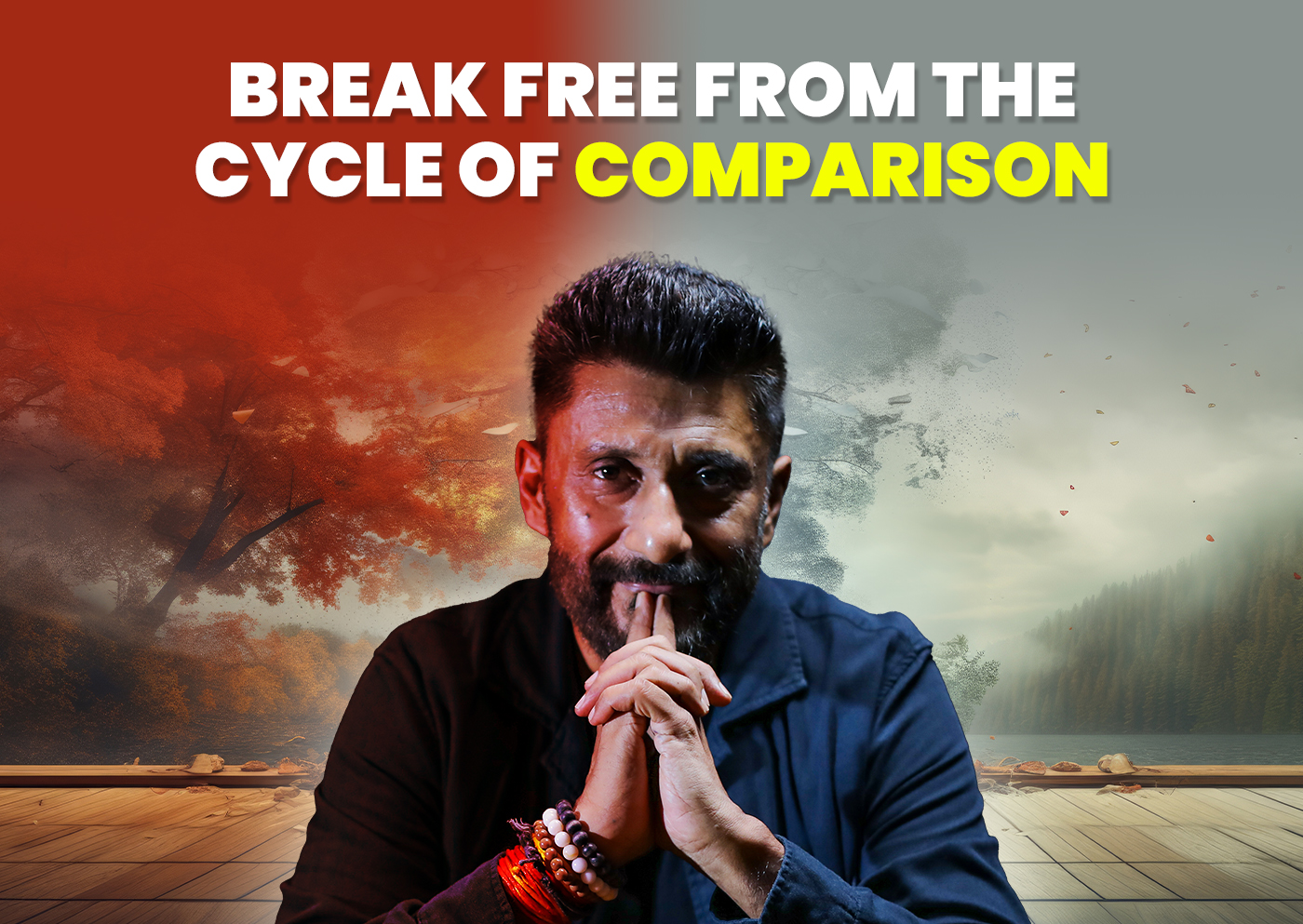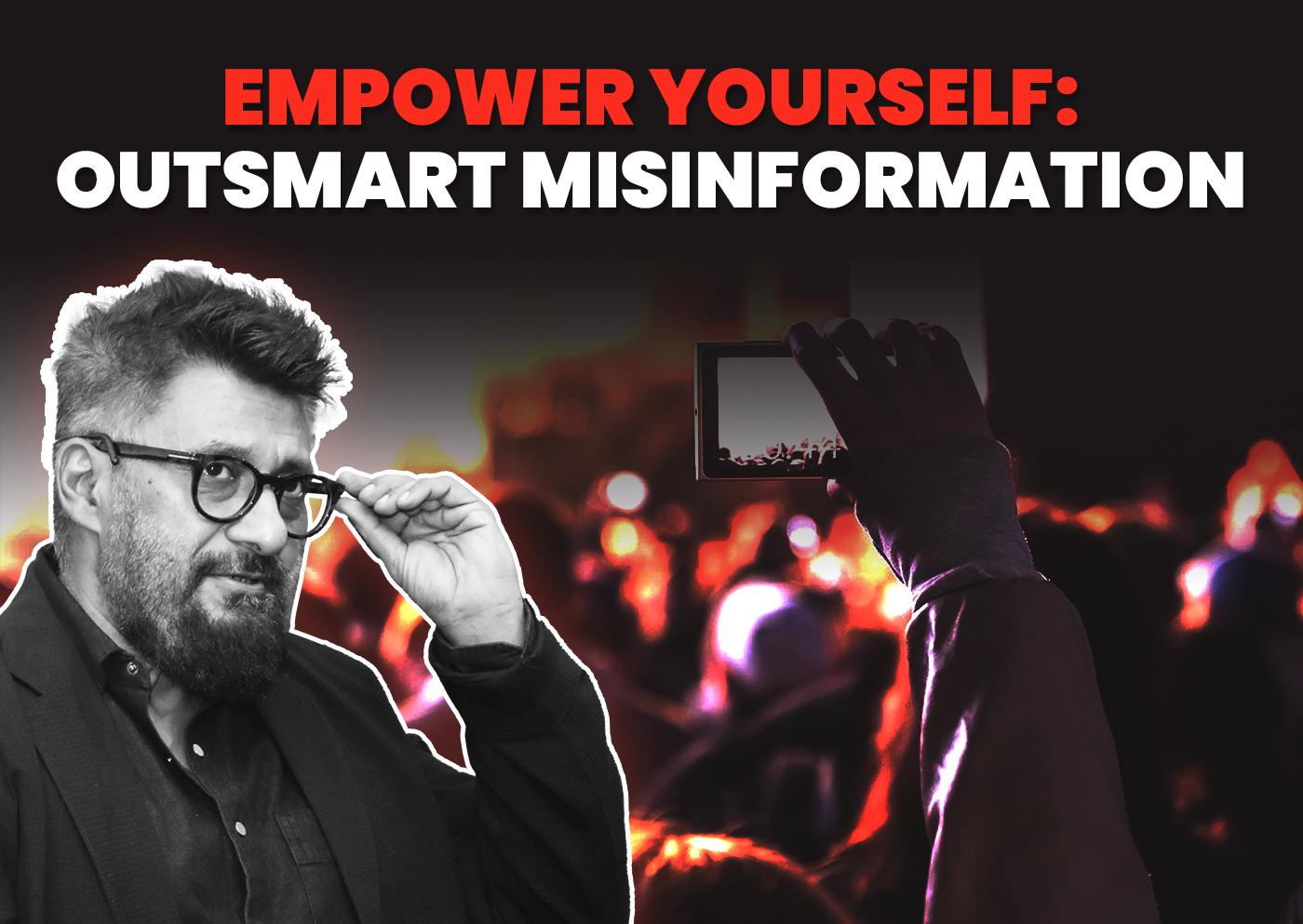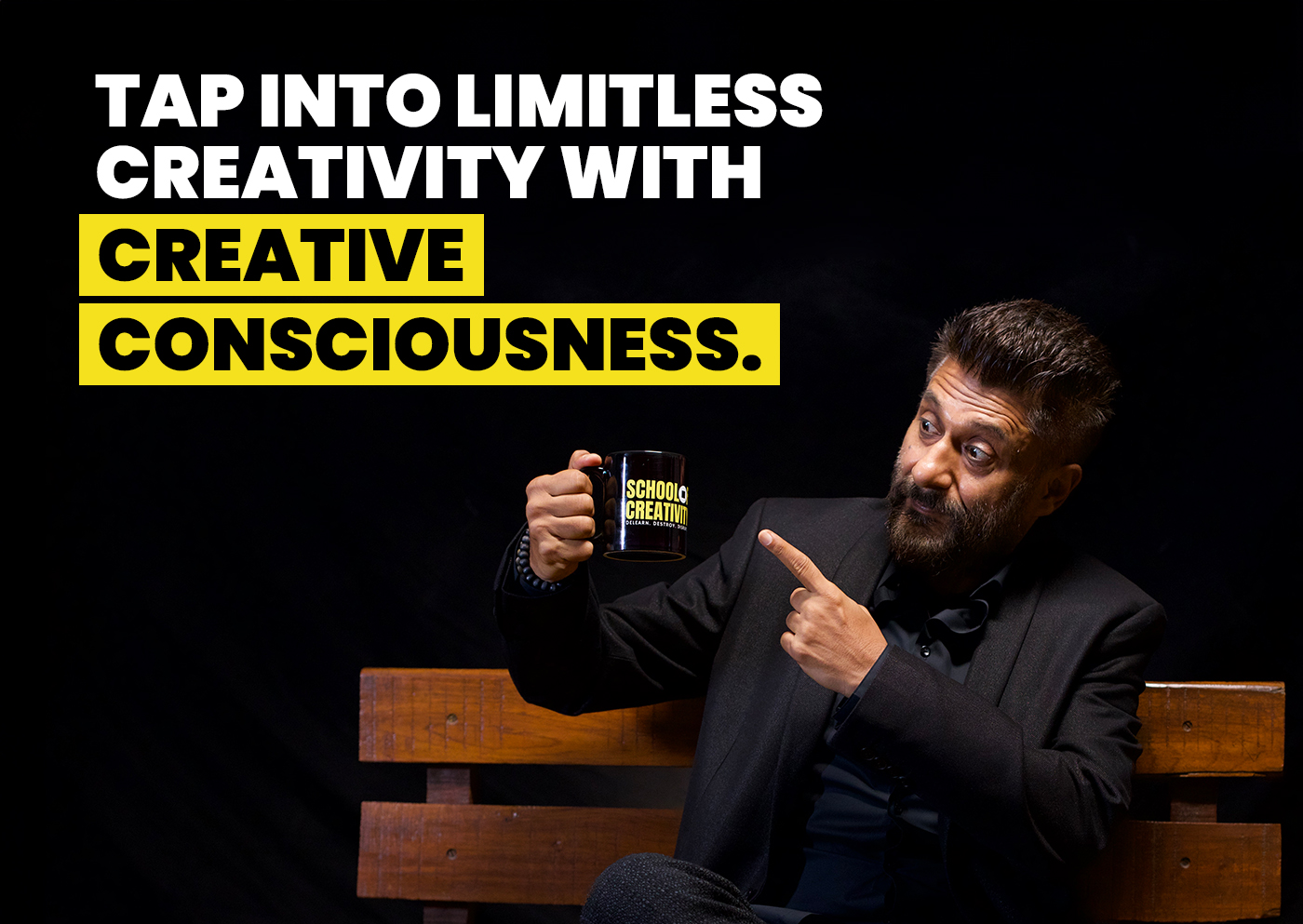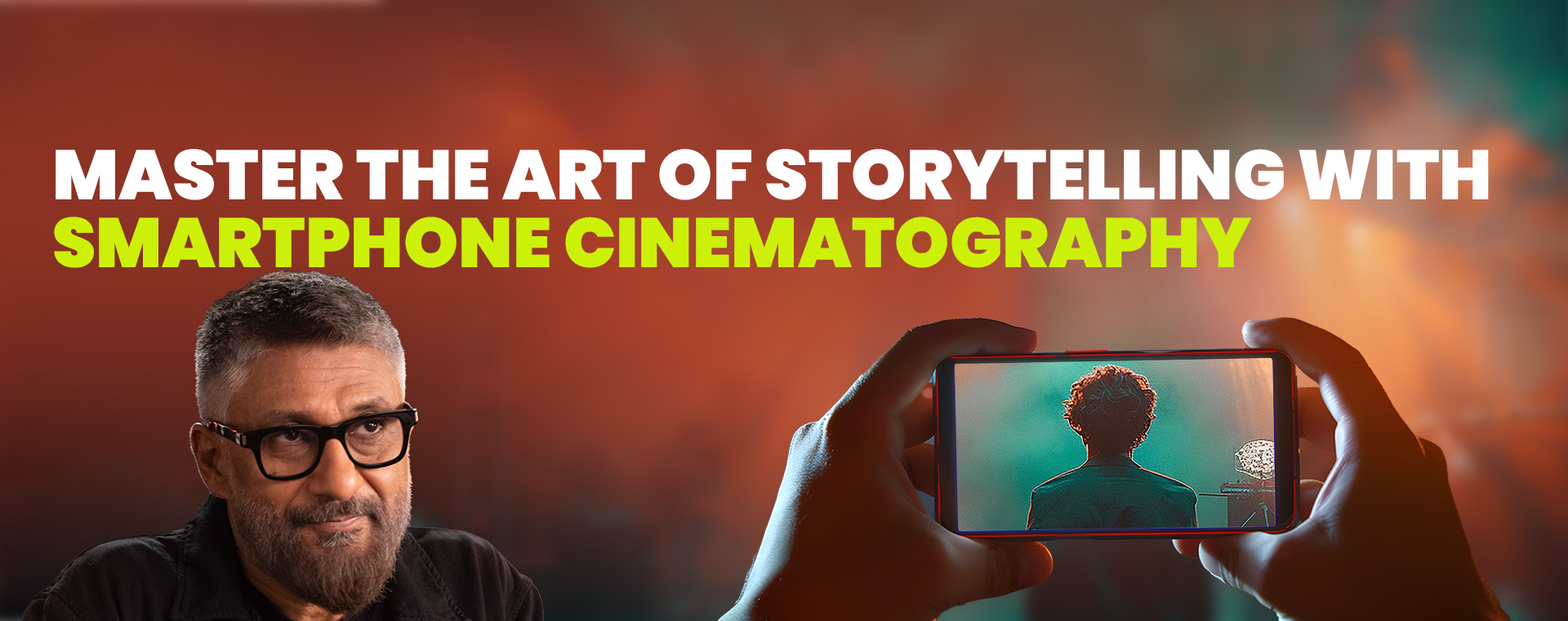
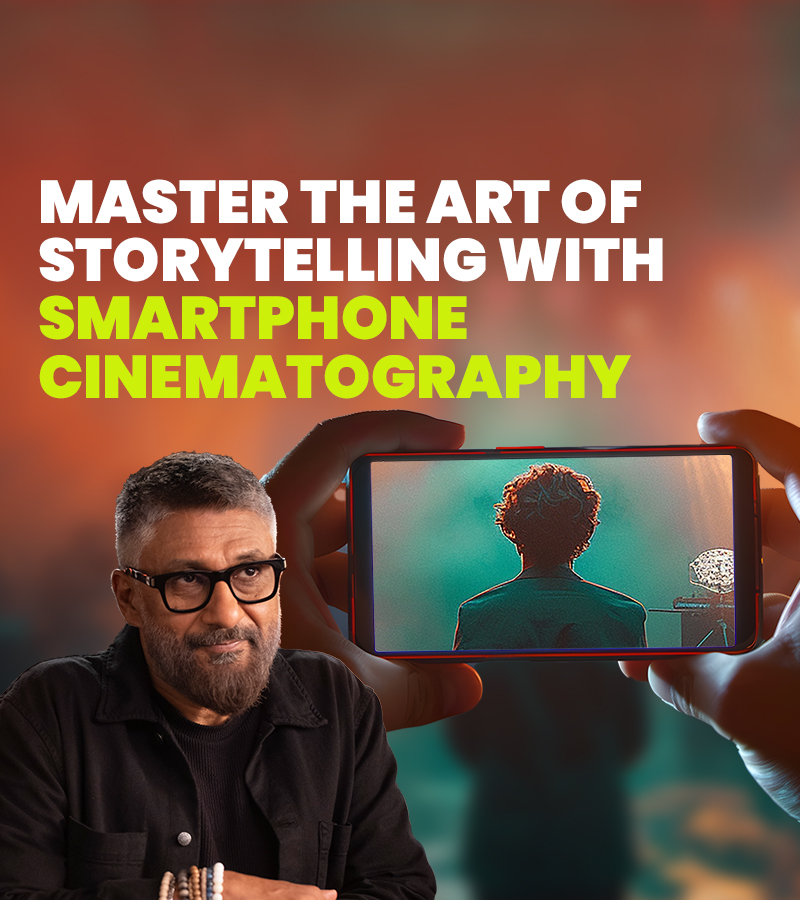
The Filmmaker’s Pocket Companion: Unlocking Your Smartphone’s Cinematic Potential
Whether you’re capturing life’s moments or crafting your first film, learn how creativity flourishes within your screen’s frame.
In an era where stories are the heartbeat of our cultural landscape, everyone has a tale yearning to be told. The art of filmmaking, once a fortress guarded by the gates of high-cost equipment and exclusive knowledge, is now more accessible than ever. Your smartphone, a device that fits in the palm of your hand, can turn you into a storyteller, capturing life’s moments in motion. This guide is dedicated to beginners and amateurs and inspired by Vivek Ranjan Agnihotri’s commitment to fostering creative consciousness. Let’s embark on a journey to transform your smartphone into a powerful filmmaking tool.
The Dawn of Smartphone Cinematography
Smartphone filmmaking has revolutionised the way we think about and create films. With technological advancements, the camera in your pocket rivals those used in professional settings a decade ago. The democratisation of filmmaking tools means that anyone with a story can now be a filmmaker. But how do you harness the power of this technology to tell your stories compellingly?
Shooting: The Basics of Cinematography at Your Fingertips
1. Understand Your Equipment: Familiarise yourself with your smartphone’s camera settings beyond just point-and-shoot. Experiment with resolution (like 4K for high-quality or HD for smaller file sizes), frame rates (slow motion for a dramatic effect or high frame rates for fast-paced action), and exposure to find the best setup for your narrative. Many smartphones offer manual shooting modes that allow you to control these aspects for a more professional look.
2. Stabilise Your Shots: Movement is crucial in storytelling, but so is stability. Shaky footage can be distracting and take viewers out of the moment. Invest in a smartphone gimbal or stabiliser, which uses motors to counteract any shake and create smoother, more cinematic footage. Alternatively, brace your phone against a stable surface or use your body strategically to minimise shake.
3. Compose Your Shots: Learn the basics of composition, such as the rule of thirds, to make visually appealing scenes. Imagine dividing your smartphone screen into a tic-tac-toe grid. The most exciting elements in your scene should be placed along the lines or at the intersections of these lines. Your smartphone screen can help you frame your shots precisely, making every angle intentional. Pay attention to leading lines, negative space, and background elements to enhance the visual storytelling.
4. Lighting is Key: Light can make or break your film, even with a powerful smartphone camera. Utilise natural light whenever possible. If shooting indoors, open up curtains and blinds to brighten the space. Experiment with available light sources for night shoots, or consider a small, portable LED light to enhance your scene without looking artificial.
5. Think About Audio: Sound design is often an overlooked aspect of smartphone filmmaking, but it can significantly impact the emotional impact of your story. Minimise background noise by choosing quieter shooting locations or using a directional microphone focusing on the specific sounds you want to capture. You can also add sound effects and music later in editing to enhance your film.
Editing: Crafting Your Story
1. Choose the Right App: There are a plethora of editing apps available for smartphones, from iMovie and Adobe Premiere Rush to more beginner-friendly apps like Splice and InShot. When choosing an app, consider the features you need, ease of use, and compatibility with your device.
2. Master the Basics: Start with fundamental editing skills – trimming clips to remove unnecessary footage, adding transitions between scenes to create a smooth flow, and layering sound effects and music to enrich the storytelling. These simple techniques can significantly impact your film’s flow and professionalism.
3. Experiment with Effects: While simplicity often reigns supreme in storytelling, don’t be afraid to experiment with filters and effects available in your editing app. They can enhance the mood and tone of your story when used judiciously. However, go easy on them – too many effects can overwhelm viewers and take away from the raw emotion of your film.
Sharing: Bringing Your Film to the Audience
1. Choose Your Platform: Depending on your film’s style and target audience, select a platform that aligns with your goals. YouTube is an excellent choice for reaching a broad audience, while Vimeo caters more to filmmakers and enthusiasts. Instagram offers short-form video options like Reels, perfect for bite-sized content. Consider niche platforms relevant to your story’s theme as well.
2. Optimise for Your Platform: Each social platform has specifications and audience preferences. Tailor your film’s format (horizontal or vertical), length (adhere to platform guidelines), and description (use relevant keywords and hashtags) to fit the platform you’re using for optimal engagement.
Advanced Techniques to Take Your Smartphone Films to the Next Level
While the core concepts remain the same, there are additional techniques you can explore to elevate your smartphone filmmaking. Here are some ideas to spark your creativity:
Utilise Multiple Lenses: Many smartphones boast built-in lenses (wide, telephoto, ultra-wide). Experiment with these lenses to create different visual effects. Use the wide lens to capture expansive landscapes or establish shots. Telephoto lenses allow you to zoom in for tighter close-ups or develop a sense of compression. Ultra-wide lenses are great for capturing dramatic perspectives or bringing a sense of immersion to your scenes.
Explore Filming Modes: Most smartphones offer various filming modes beyond the standard video option. Play around with slow-motion and time-lapse features to add a creative flair to your storytelling. Slow-motion can emphasize details or heighten emotional moments, while time-lapse condenses lengthy events into a visually engaging sequence.
Focus on Sound Design: Invest in a high-quality external microphone for capturing clearer audio, especially during dialogue scenes or interviews. Experiment with recording ambient sounds and sound effects separately to add depth and texture to your film’s soundscape.
Embrace Storytelling Techniques: Learn basic cinematography concepts like shot types (wide shots, close-ups, establishing shots) and camera angles (dutch angle, low angle, high angle) to add visual variety and guide the viewer’s focus.
Color Grading for Impact: Many editing apps offer essential colour grading tools. Experiment with adjusting your footage’s colour temperature, saturation, and contrast to create a specific mood or style. Remember, subtlety is key – avoid overly dramatic colour grading that distracts from the narrative.
Transition Magic: While simple cuts are perfectly acceptable, explore using transitions between scenes to create a smoother viewing experience. Experiment with dissolves, wipes, or fades to develop a sense of continuity or add a specific stylistic touch.
Beyond the Smartphone: Essential Gear for Aspiring Filmmakers
While your smartphone is a powerful tool, a few additional accessories can significantly enhance your filmmaking experience:
Mobile Tripod: A tripod provides stability for static shots and long exposures. It also allows you to experiment with creative camera angles, like capturing time-lapse footage or establishing shots. External Battery Pack: Filming can quickly drain your smartphone’s battery. An external battery pack gives you enough power to capture those all-important moments.
External Lighting: While natural light is preferred, a small LED light panel can be a lifesaver in low-light situations. It allows you to control the direction and intensity of light, ensuring your subjects are well-lit without looking artificial.
Smartphone Gimbal: While not essential, a smartphone gimbal provides superior stabilisation compared to handheld shooting. This is especially beneficial for capturing smooth motion shots or creating a more professional look.
The Takeaway
Embracing your smartphone as a filmmaking tool opens up a world of storytelling potential. By mastering the basics of shooting, editing, lighting, and sound and continuously experimenting and seeking inspiration, you can turn the device in your pocket into a powerful conduit for your creativity. In the spirit of Vivek Ranjan Agnihotri’s encouragement of creative consciousness, let your smartphone filmmaking journey be guided by curiosity, passion, and the relentless pursuit of telling stories that resonate.

